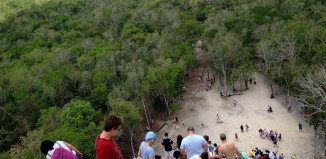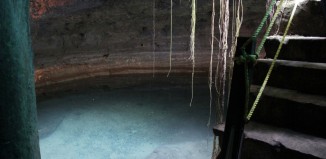Zací pit
Valladolid’s Giant
Is was our third visit to the amazing Península de Yucatán, last year we dedicated all of our time to Campeche, visiting the bulwarks and the ancient city of Calakmul, followed by Playa del Carmen and its charming 5th Avenue. I remember listening someone say that Valladolid was spectacular, but we haven’t had the opportunity…until now.
Let me start by saying, Valladolid is simply wonderful; the food, the architecture, its churches, the story behind its facade, the main park and the San Bernardino convent is all very pleasing, specially for backpackers.
The most surprising thing of all was finding a pit in the middle of the city, knowing its location, we would’ve never imagined how big it really was, we were blown away.
Nestled near the main plaza, Sultana de Oriente, Zací is one of the few opencast pits in the Península. Zací means “White hawk” in mayan, it was the name used in the prehispanic city founded in 1543, now Valladolid.
The access to the sinkhole is thru a tunnel, there is a tilled staircase and a rail that circulates de pit. This body of water has a depth of 262ft and a 45m diameter.
You can see stalagmite and stalactite formations hanging from the rocky ceiling, covering 2/3 of the pit.
During prehispanic times Zací was used for ceremonial activities as well as a water source provider, which lasted the entire XIX century. It was during the early stages of the XX century that Zací became a popular tourist attraction.
Underground streams surfaced when the roof collapsed. Birds, especially swallows, have made this pit their home.
You can enjoy a refreshing dip in the greenish but crystal clear, when close, looking waters. When you’re done swimming, visit one of the local restaurants to try some regional dishes.
Our visit to Valladolid was concluded with tremendous satisfatcion, you don’t get to see places like this elsewhere. Now we understand why this town is considered magical.







